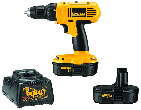From email to movies, school reports to vacation plans, you keep a lot of important information on your computer. Keeping that data storage safe is an important step to peace of mind. Backing up your PC regularly can prevent you from losing everything in case of a virus, an accident, or a disaster.
One of the key principles is to have multiple backups: You should always have your information backed up in at least two places. Multiple copies help give you a better chance of recovering your data if something goes wrong.
There are two kinds of backup that you can use for your data storage: local backup and remote or off-site backup. I will explain a little about both.
Local backup:
This is the easiest way to get started backing up your data. All you have to do is make a copy of your data on a regular basis and you have already made an improvement in your security and peace of mind. Remember to keep at least one copy in some other physical location, whether it's a safe deposit box or at your neighbor's house. If your home or office burns down, an extra copy sitting on your desk next to the computer is not going to help you any. If you are running Windows Vista or Windows 7, there are applications built-in to help you to create backups of your data easily. In some versions, you can even set up scheduled, automatic backups so that you don't accidentally forget. Whether you use those tools or not, there are several ways you can backup your data storage in your own home or office.
Web storage:
This was once the option of choice for big companies and high rollers. Recently, though, online off-site backup is increasingly becoming an option that everyone can use. There are many services available to choose from; some of the bigger names in the business are Carbonite, Mozy, and SOS. These services will backup the files you choose in their own data storage system. Some are automated, some are not. Shop around a little to find one that meets your needs and your budget.

Cordless, Compact, and Powerful! DeWalt's 18-volt drill-driver kit packs a big punch in a small package, with a powerful high-performance motor tucked away inside a compact design. A great addition to the tool chest of any professional or DIYer! Check out DeWalt 18-Volt Drill/Driver Kit today!
If you work in an office environment, then chances are you have the dream of creating a clutter free office. After all, ...
Discover MorePaperwork overwhelms some of the best of us. Hang in there and try these tips so you can get yours under control.
Discover MoreMaintaining a routine schedule for cleaning out your office will help keep your office clutter under control. Keeping ...
Discover More2023-07-02 10:30:08
J. Woolley
For more on this subject, see https://excelribbon.tips.net/T007799
2023-03-26 15:31:03
J. Woolley
My Excel Toolbox now includes the LinksToMe macro to identify all workbooks with an external data link referencing the active workbook.
See https://sites.google.com/view/MyExcelToolbox
2023-03-18 11:37:56
J. Woolley
The Tip's macro "checks every formula in every used cell of every worksheet of every workbook in a given folder." To make it more efficient, replace the following statements
For Each cel In ws.UsedRange.Cells
...
Next cel
with these statements
On Error Resume Next
For Each cel In ws.UsedRange.SpecialCells(xlCellTypeFormulas)
...
Next cel
On Error GoTo 0
But to find all workbooks that reference MyBook.xlsx, you don't need to look at formulas for each cell of every worksheet of every workbook. You can look for workbooks that have an external link to MyBook.xlsx instead. Here is a modified version of the Tip's macro that should run faster:
Sub FindWbkReferences()
Const WorkbookToDelete = "MyBook.xlsx"
Const FolderPath = "C:\Documents\Excel\"
Dim fname As String, msg As String, wb As Workbook
Dim oldAS As Variant, oldCM As Variant, V As Variant, item As Variant
oldCM = Application.Calculation
Application.Calculation = xlCalculationManual
oldAS = Application.AutomationSecurity
Application.AutomationSecurity = msoAutomationSecurityForceDisable
Application.ScreenUpdating = False
fname = Dir(FolderPath & "*.xls?")
On Error Resume Next
Do While fname <> ""
Set wb = Workbooks.Open(FolderPath & fname, _
UpdateLinks:=0, Password:="")
If Err Then
msg = msg & vbNewLine & "could not open " & fname
Err.Clear
Else
V = wb.LinkSources(xlExcelLinks)
If Not IsEmpty(V) Then
For Each item In V
If InStr(item, WorkbookToDelete) > 0 Then
msg = msg & vbNewLine & wb.Name
Exit For
End If
Next item
End If
wb.Close SaveChanges:=False
End If
fname = Dir()
Loop
On Error GoTo 0
Application.ScreenUpdating = True
Application.AutomationSecurity = oldAS
Application.Calculation = oldCM
If msg = "" Then
msg = "no files referencing " & WorkbookToDelete
Else
msg = "files referencing " & WorkbookToDelete & msg
End If
MsgBox FolderPath & vbNewLine & msg
End Sub
Replace Const WorkbookToDelete and Const FolderPath with appropriate values. Notice this version checks *.xlsm and *.xlsb as well as *.xlsx workbooks.
In each workbook that references MyBook.xlsx as an external link, you can use My Excel Toolbox's ListExLinks dynamic array function as follows:
=ListExLinks([SkipReference],[SkipHeader])
The result is similar to the Data > Queries & Connections > Edit Links dialog minus its Update column, but ListExLinks optionally adds a Reference column to identify cells that contain a formula referencing the link.
When using pre-2021 versions of Excel without support for dynamic arrays, consider UseSpillArray.pdf.
See https://sites.google.com/view/MyExcelToolbox
Copyright © 2023 Sharon Parq Associates, Inc.
Comments